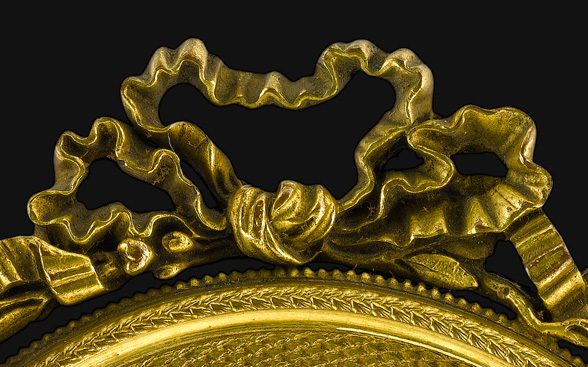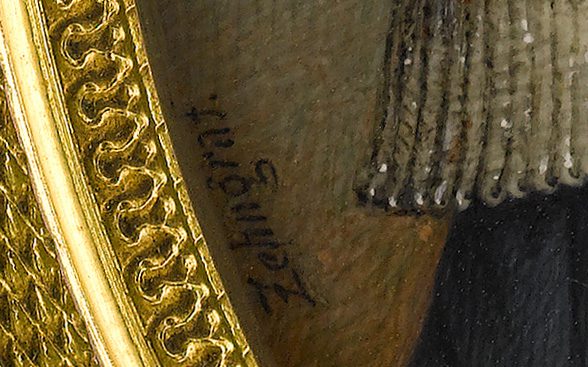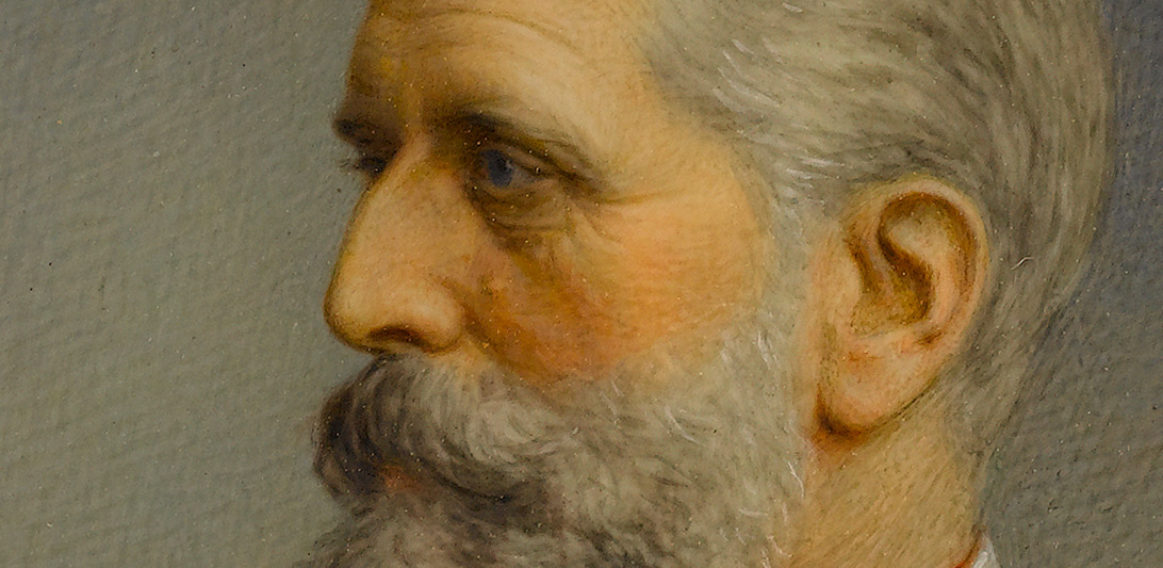This portrait by the Danish miniaturist Johannes Zehngraf (1857-1908) depicts King Carol I of Romania (1866-1914). He wears a navy military coat with red piping, a silver-trimmed red collar, silver epaulettes and buttons. Numerous orders and medals are affixed to his chest, including the breast-star of the Order of the Crown of Romania and the Order of the House of Hohenzollern. He wears a yellow moiré sash across his chest, behind a row of twelve medals. The full grey beard, neatly parted hair, piercing eyes and aquiline nose are highly characteristic of photographs of Carol I dating from the same period. The gilt oval frame that surrounds the portrait is notable for its highly decorative qualities. The rim comprises concentric rings of beading, scale and foliate patterns; the top is decorated with a ribbon and laurel motif.
King Carol I, or Karl Eitel Friedrich as he was originally known, was born in 1839 in Sigmaringen, Germany. He was educated at Dresden and Bonn, and fought against Denmark in the Prussian war of 1864. When a coup deposed the then-leader of Romania, Alexandru Cuza, in February 1866, Carol was formally elected reigning prince the same year. Carol’s reign was marked throughout by war. He led Romania through the Franco-Prussian War of 1870-71 and the Russo-Turkish War of 1877-78. He was crowned king after Romania gained independence from Ottoman rule in May 1881. Carol I died in 1914, aged 75. He was succeeded by King Ferdinand I.
Johannes Zehngraf was a well-known miniaturist whose portraits included members of the European royalty and aristocracy. He worked with some of the most significant craftsmen of his age. The Pelican egg produced by Peter Carl Fabergé in 1898, in response to Tsar Nicholas II’s commission, contains eight miniatures painted by Zehngraf. These celebrate the Dowager Empress Maria Fyodorovna’s patronage of numerous orphanages and charitable institutions.











